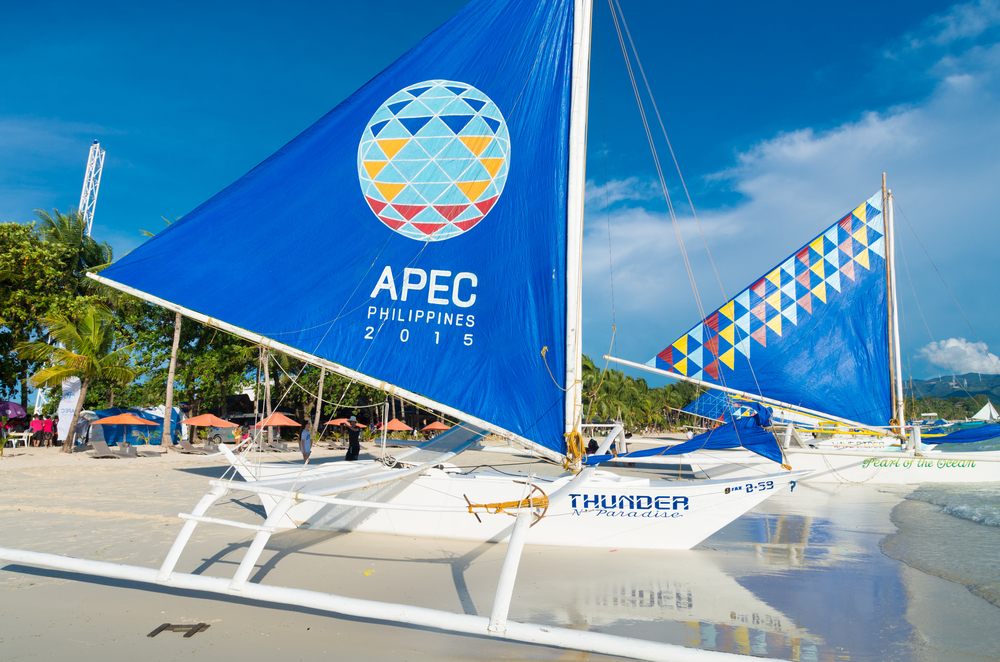Promoting an ‘Inclusive Economy’

Please note that we are not authorised to provide any investment advice. The content on this page is for information purposes only.
hans engbers / Shutterstock.com
hans engbers / Shutterstock.com
Strong trade growth has traditionally driven strong growth in the Pacific Rim region, but trade growth has disappointed over the last few years. At the same time, the region is coming to terms with some significant structural economic challenges. These issues set the scene for the Manila APEC summit.
In mid-November, senior officials met in Manila to review APEC’s progress in 2015, followed by a meeting of trade and foreign ministers to authorise on-going work. APEC is a large and complex system with 40 technical working groups, several hundred meetings and a few hundred projects underway each year. So it is no easy matter to draw conclusions about the success of the Philippines’ year as host. However, the 2015 summit did signal a new focus for APEC’s agenda.
At the 2014 summit in Beijing, many of the discussions and initiatives were about looking for new growth drivers. Infrastructure investment, domestic demand from middle income economies, opportunities from urbanisation, the internet economy and demographic drivers were all key features of the discussion.
In 2015, as usual, regional integration took centre stage. Several leaders and ministers spoke rather critically about the WTO’s 2001 Doha Round and the upcoming WTO ministerial conference in Nairobi. The general view is that APEC members want multilateral progress, but continued delays are unacceptable. Therefore, there was renewed attention on mega-regional agreements.
In late 2015, the long-awaited text of the Trans-Pacific Partnership (TPP) was made public. It is now crucial that APEC examines the TPP and the other free trade agreements, such as the Pacific Alliance, the 2015 deadlines in ASEAN integration and, potentially, the Regional Comprehensive Economic Partnership. This is still a moveable feast and in 2016 APEC will need to decide whether the Free Trade Area of the Asia Pacific is the best way to integrate these developments and move forward.
The Philippines summit also brought a new overall theme to APEC in 2015: ‘promoting an inclusive economy’. The new approach has been to identify economic sectors that have traditionally been less integrated into the Asia Pacific regional growth drivers and to seek ways to help connect them.
This has meant a focus on micro business, and small and medium enterprises as well as on women’s participation in entrepreneurship and the labour force. It has also meant a focus on the services sector — which policymakers frequently neglect despite it being the biggest part of most APEC economies.
A new focus on these sectors complements APEC’s general approach. This has been to ensure that free trade agreements and trade facilitation initiatives suit the needs of small business not just large ones. APEC aims to encourage the adoption of harmonised electronic commerce technologies, as well as the development of supply chains, in ways that will work for small business. And to develop financial literacy and access for micro business.
The Philippines is well positioned to lead this discussion because in their economy micro businesses are everywhere, women own most of the businesses and the services sector is very advanced.
This year APEC seriously took into account the transition of economies, a change from a focus on manufacturing trade to a new focus on services trade. The APEC business meetings throughout 2015 pointed less to traditional tariff and customs barriers, and more to new generation issues. These included telecommunications standards, internet regulation, data privacy, cybersecurity and intellectual property.
At the accompanying APEC CEO Summit in November 2015, US President Barack Obama gave an interesting speech on APEC and climate change with an eye to the COP21 Paris meetings. Although not primarily an environmental protection agency, APEC is very focused on the connections between trade and the environment. APEC is already undertaking some evolving projects on energy efficiency, carbon emissions, environmental goods, renewable energy generation, sustainable development and electric cars.
As 2015 draws to a close, APEC officials are already starting to pack their bags for the first meetings of the 2016 host economy, Peru. It is vital that there is continuity between the hosts because almost all APEC initiatives are multi-year in nature. Peru will announce its themes shortly, but they are likely to continue the focus on capacity building and small business that was emphasised by the Philippines in 2015.
APEC’s new focus is republished with permission from East Asia Forum




